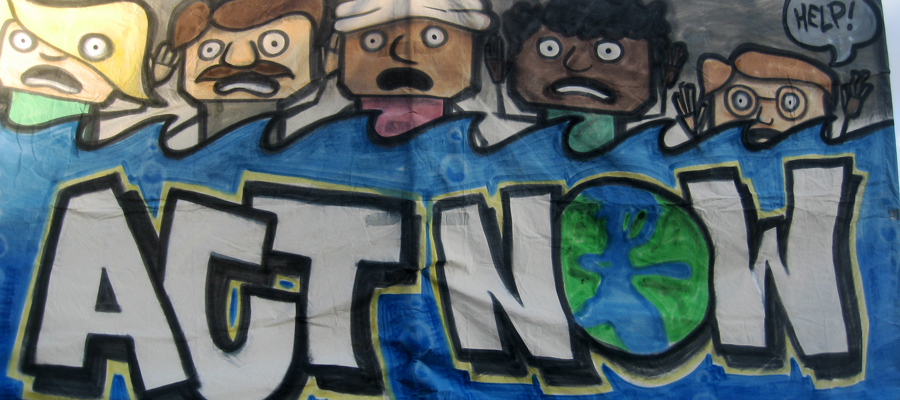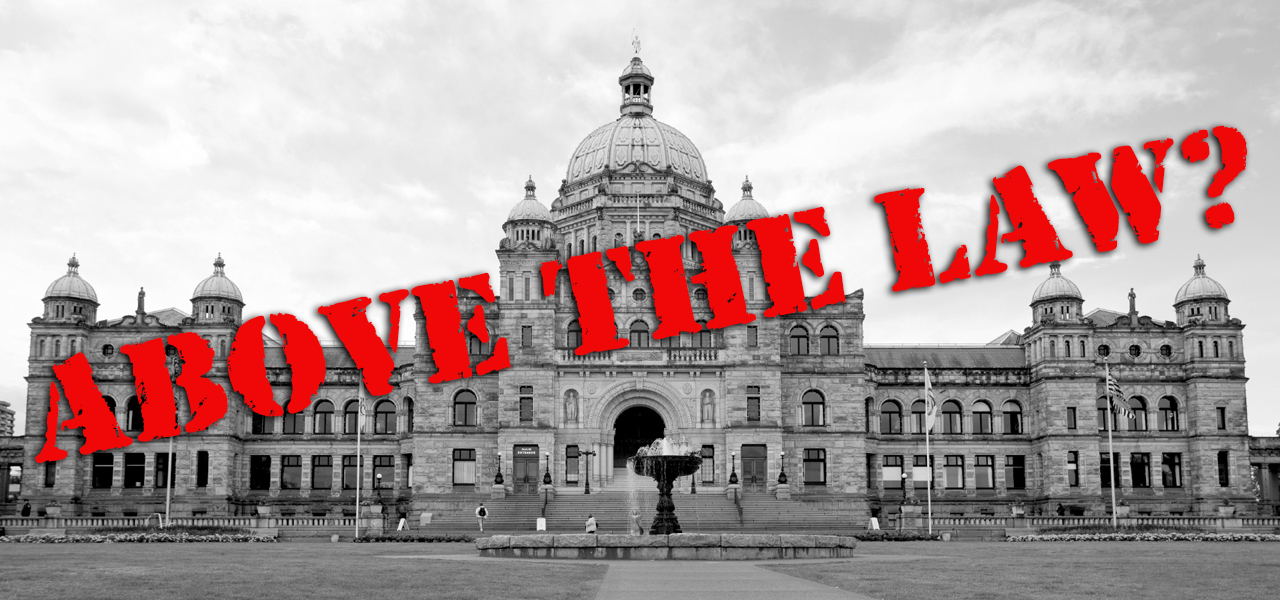Where is BC headed on climate action?

Canadian politicians have a long-standing tradition of proclaiming targets to reduce greenhouse gas emissions, then failing to meet them. After a wake-up call in the form of a record fire season this past summer, what are the prospects for climate leadership from BC’s new government?
First, a look back
November 29 marked ten years since BC passed the Greenhouse Gas Reduction Targets Act. The Act set fairly ambitious targets that, if implemented, would show that BC is serious about reducing the amount of carbon we collectively put into the atmosphere by reducing emissions 33% below 2007 levels by 2020 and 80% below by 2050. The legislated targets, it was claimed at the time, were testament to the government’s seriousness about climate change.
Early climate action in BC included the introduction of North America’s first bona fide carbon tax in 2008 and a plethora of other measures such as some home energy efficiency retrofits and a clean energy mandate for BC Hydro. But instead of completing the work to put the province on a clear path to meet the targets, the BC government lost interest in meaningful climate action, its focus captured instead by the lure of a massive liquefied natural gas (LNG) export industry, despite its questionable economics and tremendous environmental costs.
In the lead-up to the 2015 Paris Climate Agreement, the Christy Clark government created a Climate Leadership Team to make recommendations for a new BC climate plan, but after Paris those recommendations were ignored. As the Corporate Mapping Project has revealed, the BC government went to Calgary instead and strategized with the oil and gas industry to neuter the climate plan while publicly pretending it was taking “leadership.”
Early climate action in BC included the introduction of North America’s first bona fide carbon tax in 2008.
A decade after BC’s greenhouse gas (GHG) targets were first legislated, it is clear the province will miss its 2020 target by a wide margin. BC emissions have been reduced by a mere 3% (relative to 2007 levels and as of 2015, the latest year for which we have data). Emissions from the oil and gas industry have gone in the opposite direction, increasing by 10%.
A new government, a new climate advisory group
A new government in BC means an important opening for advancing more aggressive climate policies. To date, however, there is no timeline for a new climate action plan, and any plan would need corresponding changes to legislation, regulations and a budget commitment to invest in the transition.
The NDP platform endorsed the recommendations of the previous government’s Climate Leadership Team, and adopted its proposed new GHG reduction target of 40% below 2007 levels by 2030, together with sector-specific targets for transportation (30% reduction by 2030), industry (30% reduction by 2030), and buildings and homes (50% reduction by 2030).
But setting targets is easy; meeting them is much harder. To this end, the new government created its own advisory body last month, the Climate Solutions and Clean Growth Advisory Council. The new council is co-chaired by Merran Smith of Clean Energy Canada and Marcia Smith from Teck, a mining company that happens to have massive oil sands interests. Teck is now completing its $13 billion Fort Hills oil sands mine and is seeking approval for its $20 billion Frontier oil sands mining project.
While the new council has broad representation from municipal government, labour, environmental groups and First Nations, the decision to include both Teck and a past president of the Canadian Association of Petroleum Producers is problematic because strong climate action needs to take on the industries causing the problem.
Setting targets is easy; meeting them is much harder.
Ultimately, the Climate Solutions and Clean Growth Advisory Council will not produce reports with detailed recommendations, as the previous Climate Leadership Team did, nor will it conduct public hearings as will the new provincial committee on poverty reduction.
Instead, the new council will be more of a sounding board to comment on proposals brought forward from the government’s Climate Action Secretariat and to “provide advice on implementing the recommendations of the 2015 Climate Leadership Team,” according to the council’s terms of reference.
Assessing the new government’s policies to date
While it is positive to see a commitment to implement those 2015 Climate Leadership Team (CLT) recommendations, it is important to remember that they were heavily constrained. The previous CLT couldn’t deliver a package of recommendations that would actually meet its own proposed 2030 target. A major reason for this is likely the fact that the CLT was required to work around the Clark government’s commitment to develop an LNG industry. Positive comments from Premier Horgan and Energy Minister Mungall about pursuing LNG on the north coast suggest this could continue to block BC’s efforts at serious climate action.
The CLT’s flagship recommendation was a $10 per tonne annual increase in the carbon tax (offset by a 1 percentage point reduction in the PST). In the September BC Budget Update, however, the new government committed to more modest increases of just $5 per tonne starting in April 2018 and for the three subsequent years. This will add 1.2 cents per litre at the pump per year. The government will have to table other measures and regulations to make up for only going with a $5 per tonne annual increase instead of $10.
On the plus side, the BC government broke with the previous policy of “revenue neutrality,” which required that carbon tax revenues flow back to households and businesses through tax cuts and credits. This is consistent with the NDP promise to “invest a portion of carbon tax revenues directly into reducing emissions and climate change solutions, like investing in transit, energy efficiency, clean technology, and initiatives that will reduce our dependence on fossil fuels.”
On the plus side, the BC government broke with the previous policy of revenue neutrality.
The budget update also increased the low-income carbon credit to a maximum of $135 per adult and $40 per child. While an improvement, it is not yet the same as the election platform commitment to develop a “new climate action rebate cheque for low and middle income families so that 80% of households would receive the rebate cheque each year, in advance.” Presumably, we’ll see more on that in next February’s budget.
Also on carbon pricing, the Supply and Confidence Agreement between the NDP and the Green Party calls for the carbon tax to be expanded to include fugitive emissions from oil and gas operations and from slash-pile burning in forestry. Those measures were not in the Budget Update but we hope to see them in the February 2018 budget.
Looking ahead
Obviously, much more is needed if BC is to meet its new GHG target. There are other good recommendations from the CLT that we look forward to seeing implemented, including:
- Adding the social cost of carbon (the estimated value of damages from emitting a tonne of carbon dioxide) into the environmental assessment process;
- A 100% clean electricity target by 2025;
- Phase out diesel generation in First Nations and remote communities by 2025;
- Targets for zero emission vehicles—10% by 2020, 22.5% by 2025, 30% by 2030;
- Increasing BC’s low carbon fuel standard to 20% of fuel content by 2030;
- Revising the building code to be more highly efficient, and retrofits for existing homes and buildings; and
- Increased public transit.
Another important piece of the puzzle is the NDP election platform commitment to “appoint a scientific panel to review the practice [of hydraulic fracturing] to ensure that gas is produced safely, and that our environment is protected. This will include assessment of impacts on water and, given recent minor earthquakes in the area, what role gas production has in seismic activity.”
This has yet to be acted on, and the CCPA and 16 other organizations recently called for a public inquiry into fracking.
Unfortunately, the draft federal regulations are fairly weak as emissions are not independently monitored and fines are not levied for failing to comply.
Fracking is a major source of methane emissions (methane is the principal component of natural gas and a much stronger heat-trapping greenhouse gas than carbon dioxide). The federal government is currently developing regulations to reduce methane emissions by 40–45% by 2025. The CLT endorsed a similar target for BC.
Unfortunately, the draft federal regulations are fairly weak as emissions are not independently monitored and fines are not levied for failing to comply. Field tests in both BC and Alberta have found emissions to be much higher than reported by industry.
The federal regime will exempt provinces (like BC) that have equally or more stringent rules of their own. So BC could play an important leadership role in this area by literally putting a lid on all of the methane going into the atmosphere from leaking wells and processing facilities for fracked gas.
The BC government’s opposition to Kinder Morgan’s TransMountain pipeline expansion is laudable. But there is much left to be done on climate action in BC, especially if the province wants to truly live up to its promised new targets and the strong words in its September 2017 Throne Speech:
Your government will take decisive action on global climate change, the greatest challenge of our generation. We must do everything we can to reduce emissions and keep global temperature increases below two degrees. Together, we will fight climate pollution and create opportunities for people, including thousands of jobs through energy retrofits and public infrastructure.
As history shows, however, talk is cheap. We need an action plan commensurate with the urgency posed by climate change and the aspirations of leadership claimed by BC politicians.
Topics: Climate change & energy policy, Economy, Environment, resources & sustainability, Fracking & LNG


